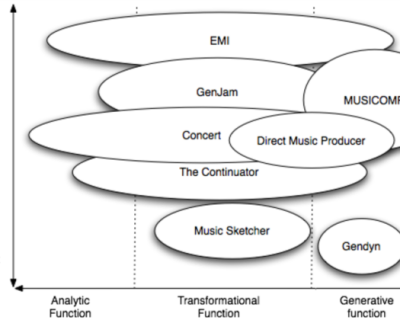The concepts and terms currently applied to discussions of algorithmic music are varied and, especially for new comers, often confusing. For example, consider the term “generative music”, which is used with different meanings by various scholars and famous practitioners. Myself, Rene Wooller, Joachim Dederich, Eduardo Miranda and Rodney Berry have developed framework designed to clarify discussion of algorithmic musical processes through cateogisation and clustering based on features.

The framework is based on two principal attributes that enable intuitive comparison of algorithmic compositional processes, these are its type of function (analytic, transformational or generative) and it’s the breadth of its inclusion (encapsulation) of musical context. Our framework for the comparison of processes in algorithmic music has several applications. It can help composers understand the processes and potential of algorithmic systems when designing or selecting algorithms that meet creative needs. It can assist musicians and researchers to differentiate between algorithmic processes and more clearly articulate the features of computer music systems. Unexplored applications of the framework could include tracking the evolution of algorithmic music systems and spot design trends. The framework, through extension, might also be applied to system evaluations. We look forward to seeing in what other contexts uses are found for applying this comparative framework.
For more information there is an academic paper on this that was presented at the Generative Arts Practice conference in 2005.
Wooller, Rene, Andrew R. Brown, Eduardo Reck Miranda, Rodney Berry, and Joachim Diederich. 2005. “A Framework for Comparison of Processes in Algorithmic Music Systems.” In Generative Arts Practice, edited by Ernest Edmonds, Paul Brown, and Dave Burraston, 109–24. Sydney, Australia: Creativity and Cognition Studios Press.

